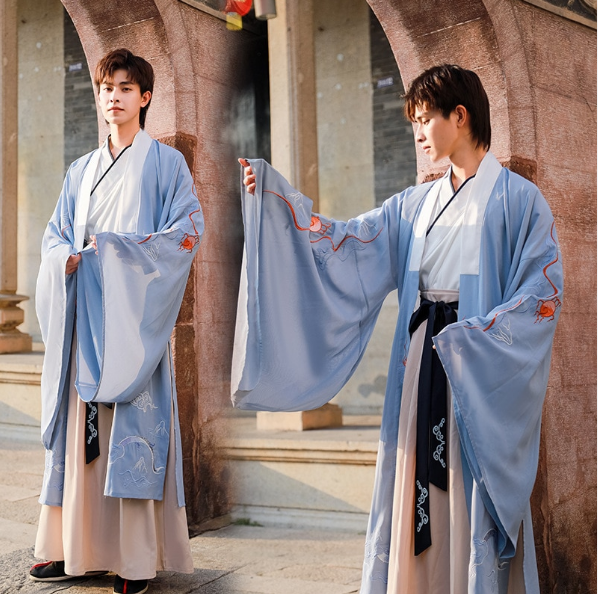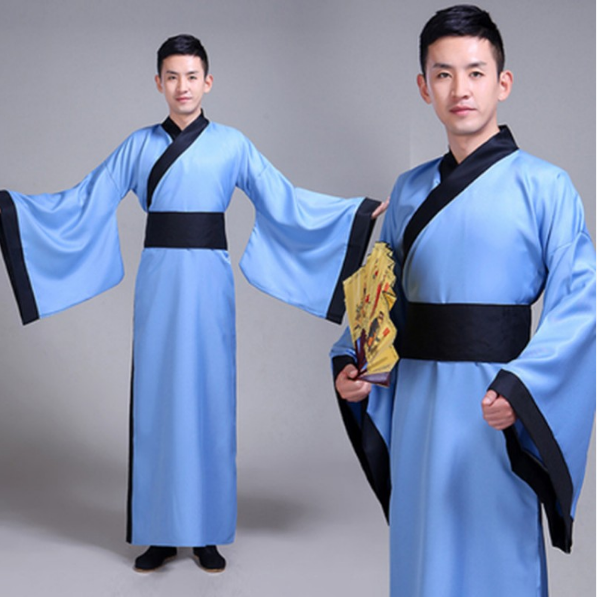Male Chinese robes are traditionally called Changshan, reflecting a rich cultural heritage and a distinct, elegant style.
History and Origins
Historical Background of Chinese Robes
Chinese robes, known for their elegance and cultural richness, trace back to the Shang Dynasty, around 1600 BC. The style evolved significantly over centuries, reflecting social hierarchies and cultural shifts. Initially, these garments symbolized status and were exclusive to the nobility and royalty. As dynasties changed, so did the robe designs, incorporating various fabrics, colors, and patterns. For example, during the Tang Dynasty, the popularity of silk robes surged, showcasing intricate embroidery and vibrant hues.
Evolution and Origins of Traditional Robes
The evolution of traditional Chinese robes mirrors the country’s historical and cultural transformations. During the Ming Dynasty, the ‘hanfu’ became prevalent, characterized by its cross-collar, wide sleeves, and sash. This garment laid the foundation for the ‘qipao’ or ‘cheongsam’ in the 20th century, a more form-fitting robe that gained popularity among women. The qipao represents a blend of traditional Chinese aesthetics with Western fashion influences, illustrating China’s journey through different eras.

Throughout this evolution, materials played a crucial role. Silk remained a preferred choice for its quality and symbolism of wealth. Linen and cotton were also commonly used, especially among the lower classes. The use of specific colors like red, symbolizing good luck and joy, and yellow, reserved for the emperor, added layers of meaning to these robes.
Each era’s robes tell stories of the prevailing values, social structures, and artistic inclinations, offering a window into the rich tapestry of Chinese history and culture. For more detailed insights into the materials and cultural significance of these robes, one can explore relevant articles on Wikipedia.
Styles and Design
Robe Styles Across Different Dynasties
Chinese robe styles have dramatically evolved through different dynasties, each reflecting its unique aesthetics and values. During the Tang Dynasty, robes showcased luxury with their use of gold threads and fine silk, symbolizing the era’s prosperity. In contrast, the Song Dynasty favored simpler, more refined designs, focusing on elegance rather than opulence. The Ming Dynasty saw the rise of the ‘hanfu’ with its straight lines and flowing sleeves, emphasizing a harmonious balance. Each dynasty’s style represents a specific historical context and societal norms, capturing the essence of the era.
Elements of Traditional and Modern Robe Designs
The elements of traditional Chinese robe designs have influenced modern fashion in many ways. Traditional robes often feature intricate patterns, symbolizing various cultural motifs like dragons for power or lotuses for purity. Modern designers draw inspiration from these elements, integrating them into contemporary garments. They often blend traditional silhouettes with modern fabrics and tailoring techniques, creating a fusion that respects heritage while embracing innovation. This blend results in garments that are not only culturally rich but also resonate with modern fashion sensibilities.
Materials and Craftsmanship
Common Fabrics and Textile Techniques
In the realm of Chinese robes, silk reigns supreme, renowned for its sheen, strength, and texture. Artisans have historically used silk, drawing from sericulture practices refined over centuries. Another common fabric is linen, known for its durability and comfort, especially in warmer climates. In terms of textile techniques, embroidery stands out, often involving meticulous handwork to create intricate patterns. Brocade, a technique involving weaving silk with gold and silver threads, is also prominent, adding a luxurious touch to the garments.
Differences Between Handcrafted and Machine-Made Robes
Handcrafted robes showcase the pinnacle of personalization and craftsmanship. Each stitch and detail reflects the artisan’s skill, often resulting in unique, one-of-a-kind pieces. In contrast, machine-made robes offer consistency and affordability, albeit at the cost of individual uniqueness. While handcrafted robes are labor-intensive and time-consuming, making them more costly, they often possess a quality and aesthetic that machines cannot replicate. This distinction highlights the balance between tradition and modernity in the world of Chinese robes.
Cultural Significance and Symbolism
Symbolic Meanings of Robes in Chinese Culture
In Chinese culture, robes carry profound symbolic meanings. Colors play a crucial role: red symbolizes good fortune and joy, while yellow, traditionally worn by emperors, represents power and prosperity. Dragons, often embroidered on robes, denote strength and authority, whereas phoenixes symbolize grace and virtue. These symbols, woven into the fabric of the robes, reflect the wearer’s status, beliefs, and aspirations, embedding cultural narratives into the garments themselves.

Use of Robes in Festivals and Ceremonies
Robes hold a special place in Chinese festivals and ceremonies, serving as more than just attire. During weddings, the bride and groom often wear elaborately designed robes, symbolizing their union and blessings for a prosperous future. In traditional festivals like the Lunar New Year, people wear robes to honor their heritage and celebrate in a manner that pays homage to their ancestors. These robes, rich in color and design, contribute to the vibrancy and spirit of these occasions, making them an integral part of the cultural festivities.







